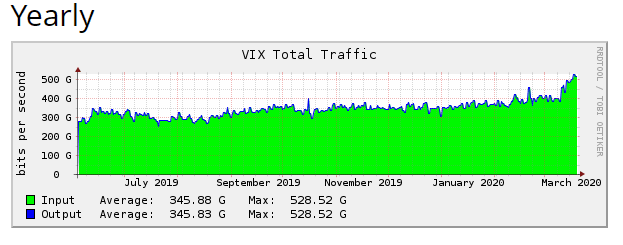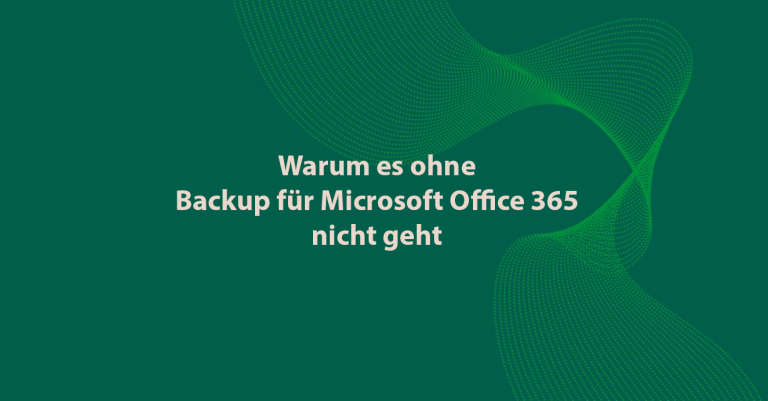
All of Austria sits in the home office
All of Austria? Ok, this may be a bit exaggerated, but it is certainly undisputed that for about two weeks now a much higher number of people have been working from home. And besides many factors that make this unusual for many people like little space, many people in the flat, distractions and the like, we get to hear one statement in particular again and again: "Why is it all so slow, the work is very tedious."
Highly increased traffic
At VIX (Vienna Internet eXchange), one of the main nodes in Austria, where the worldwide data exchange of international providers converges, traffic has jumped by about 25% - see graph.

As the average values from all of Austria are considered here, it is clear that there may be considerable peaks in occupancy rates locally. These are difficult to determine in the average values, but are very likely.
The second diagram shows the course of the last 24 hours. The peaks in the evening are easy to classify, for example streaming. But also during the day the traffic is on a very high level almost all day.

Overbooking - the magic word with Internet connections
Internet connections are generally sold to private users in Austria with overbooking. This means that the actual technically feasible bandwidth for uploads from the distribution node is sold far beyond the available capacity[1]. And this is certainly not a problem in "normal" times, since the majority of the time only a part of the users actually uses the bandwidth.
In addition, the networks are usually set up for downloads, and the bandwidth for uploads (i.e. the data that the user transfers to the Internet via his terminal device) is usually much lower.
With WLAN the problems are certainly similar, especially in conurbations such as large cities, because it is a shared medium. This means a few frequencies that all logged-in devices use simultaneously. This results in transmission errors. Therefore the packets have to be sent several times until they arrive at the access point or router. And the traffic keeps increasing...

What can you do?
Without reinventing the wheel, it often helps to look at the following things:
- Especially in densely built-up areas work with cable via a LAN connection
- Check your hardware, often the router has not been renewed for years and old hardware is often not up to the new requirements.
- In any case, you should make sure that other services such as streaming, online gaming (e.g. children's Playstation) etc. are at best not used during working hours.
- Check the location of the terminal device if you are using WLAN. Often the workplace is not in the area that is well covered by the WLAN router.
- Do one of the speed tests of the connection offered by providers. If the values differ drastically from the theoretical values, contact your provider. Almost all providers have worked hard in the past few weeks to reduce problems with the increasing network load.
And last but not least...
By the way, throttling the traffic for streaming services should not bring any significant improvement, since they usually include intelligent mechanisms that adapt the quality to the available bandwidth.
[1] Compare for example https://www.magenta.at/pdf/Internet_und_Internet_TV_Kabel_ab16072019/tarif.pdf







